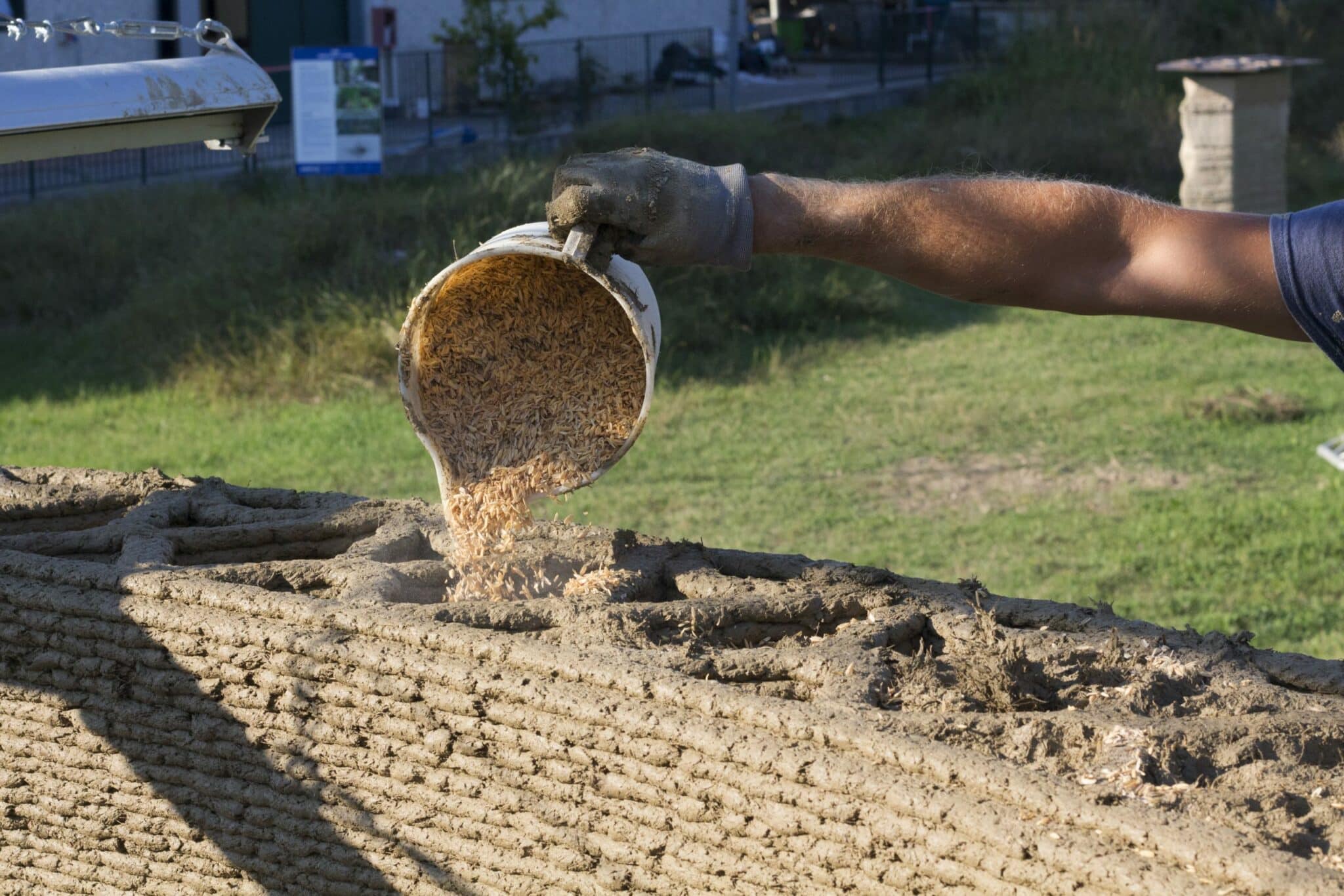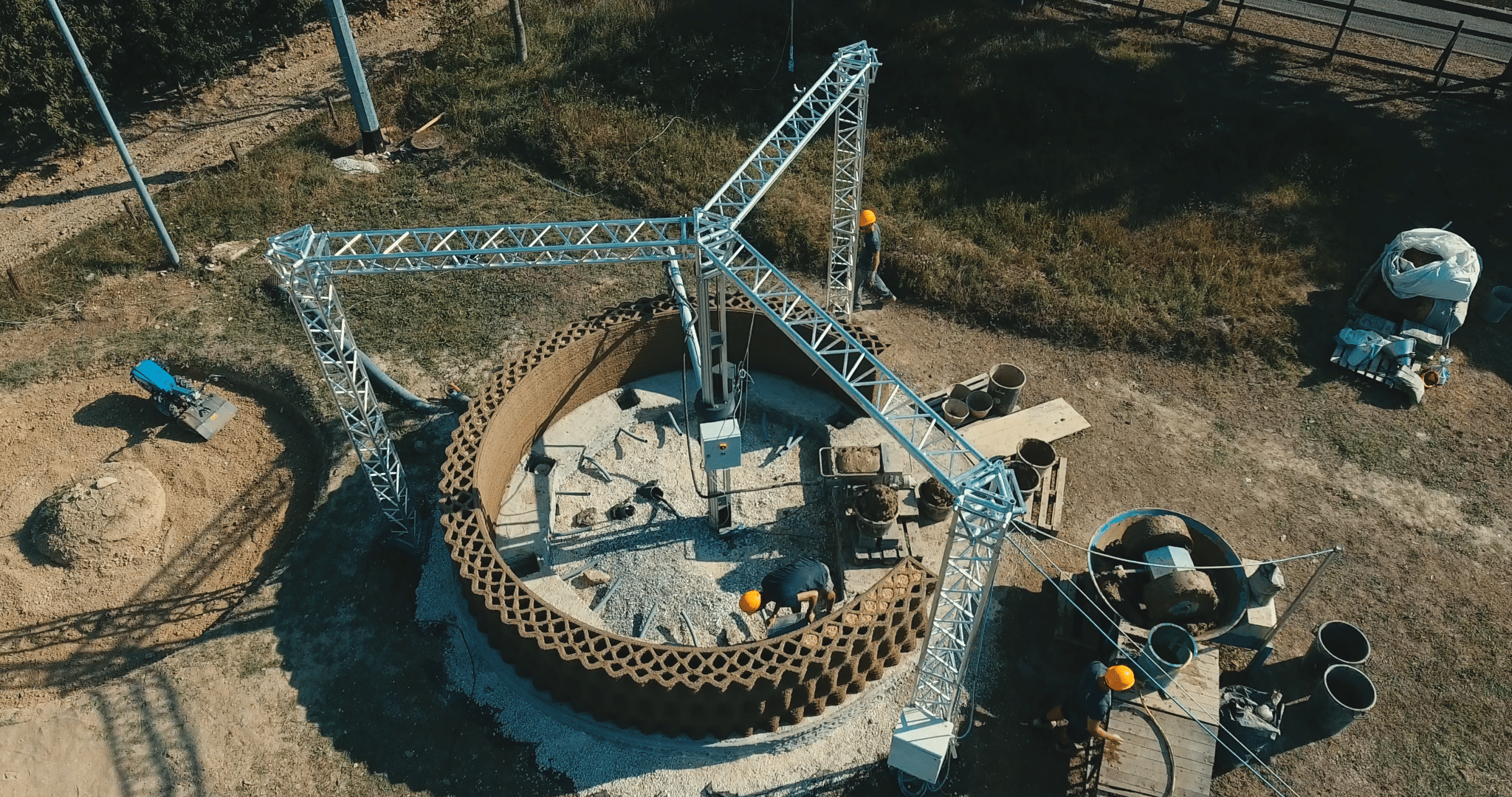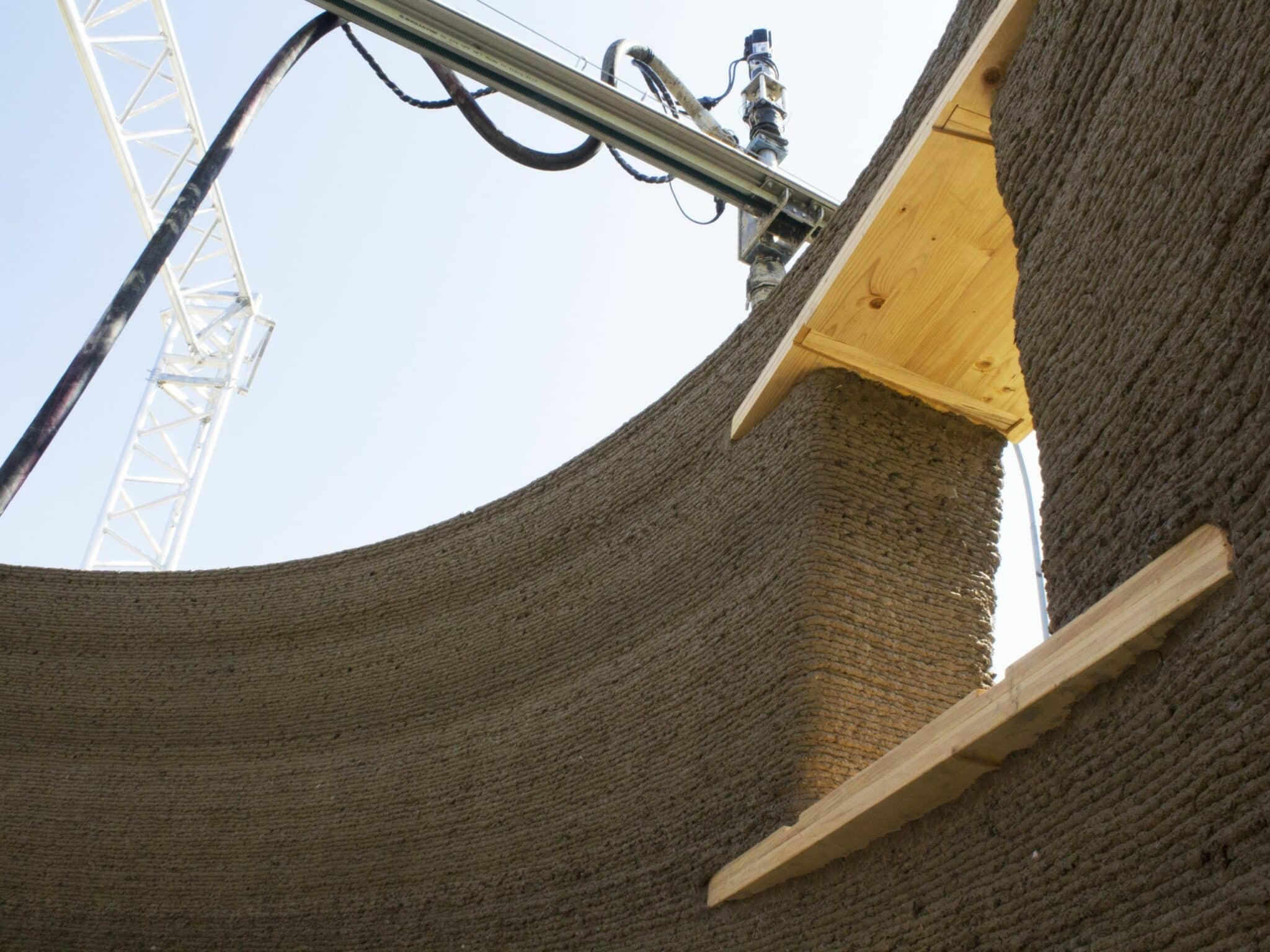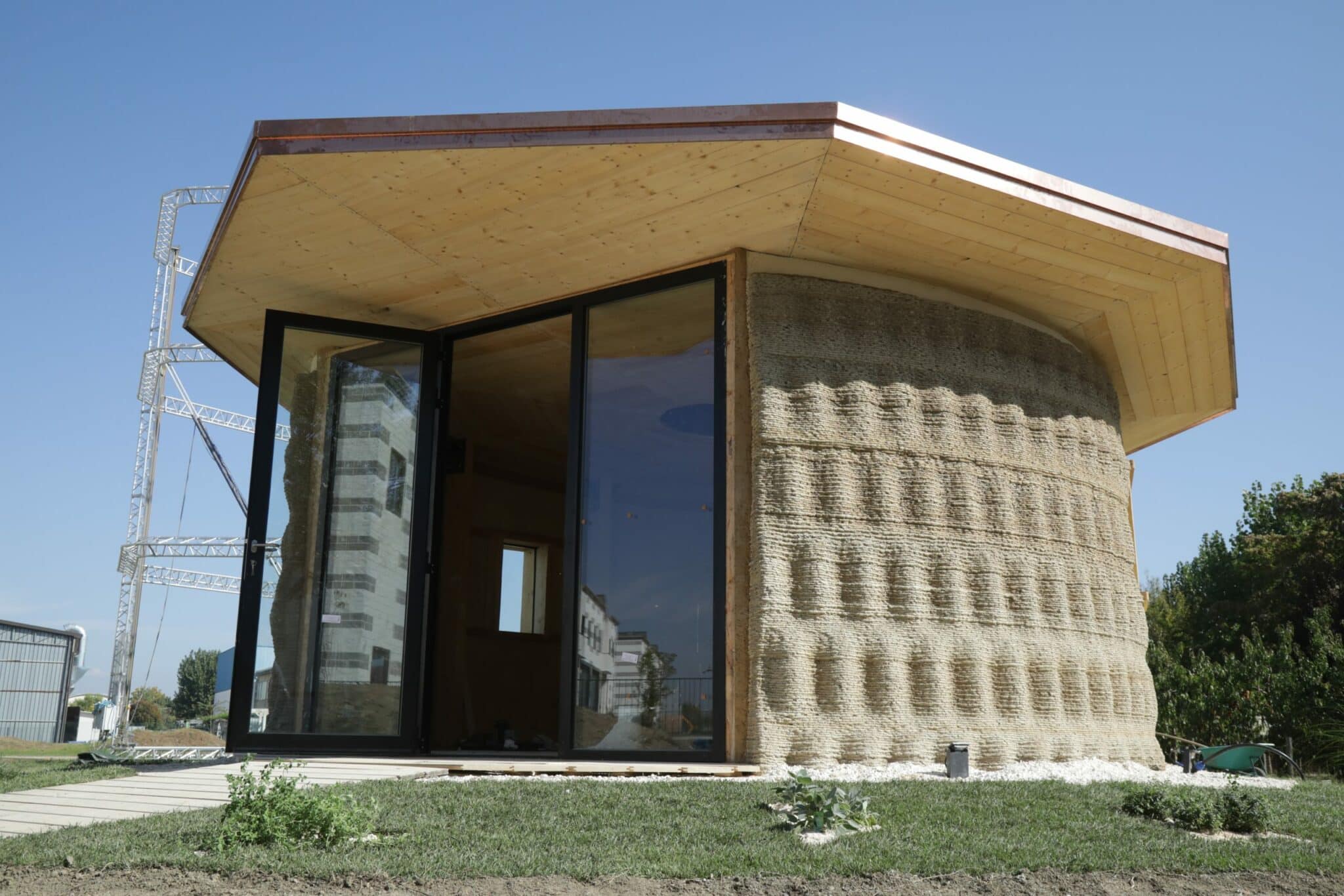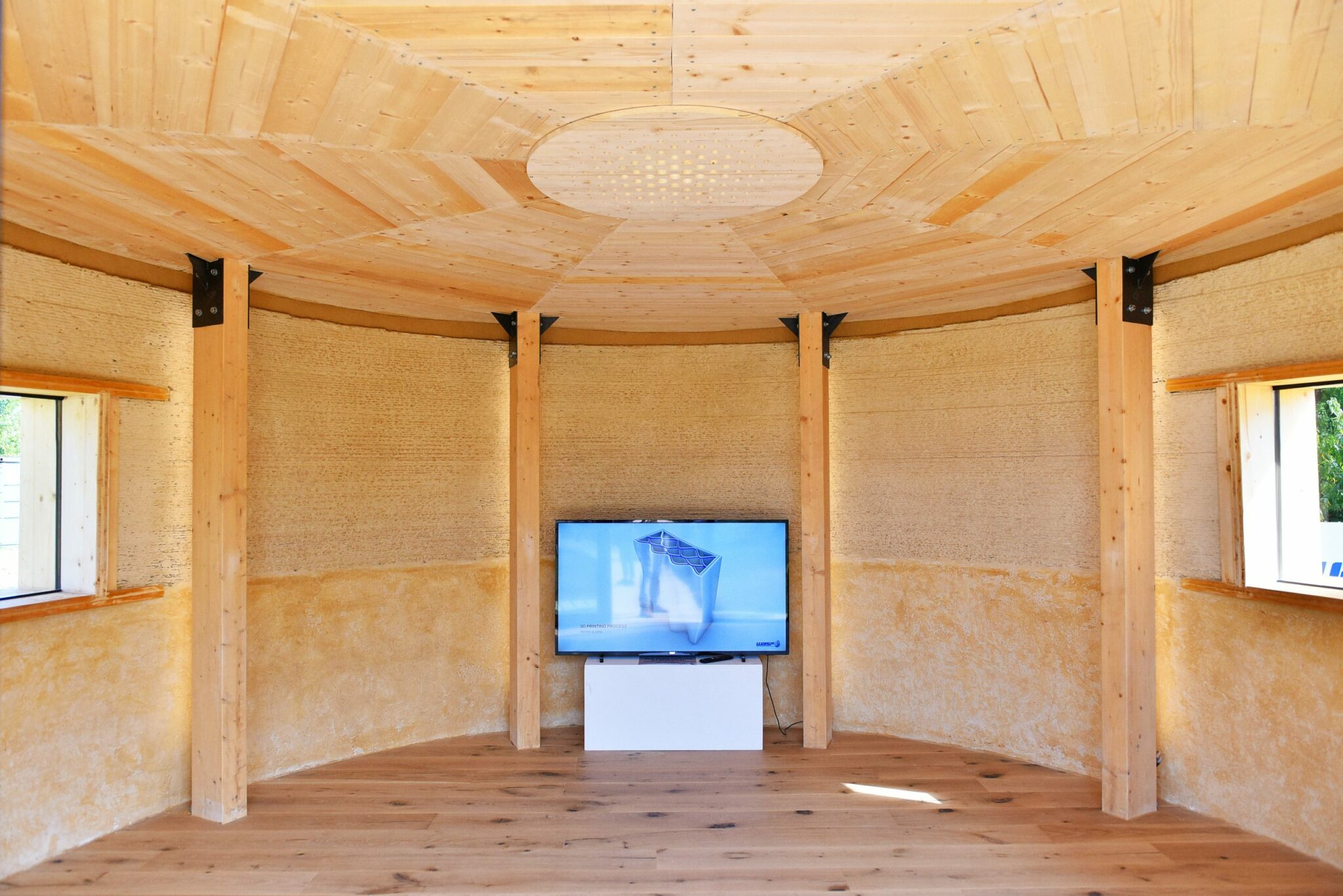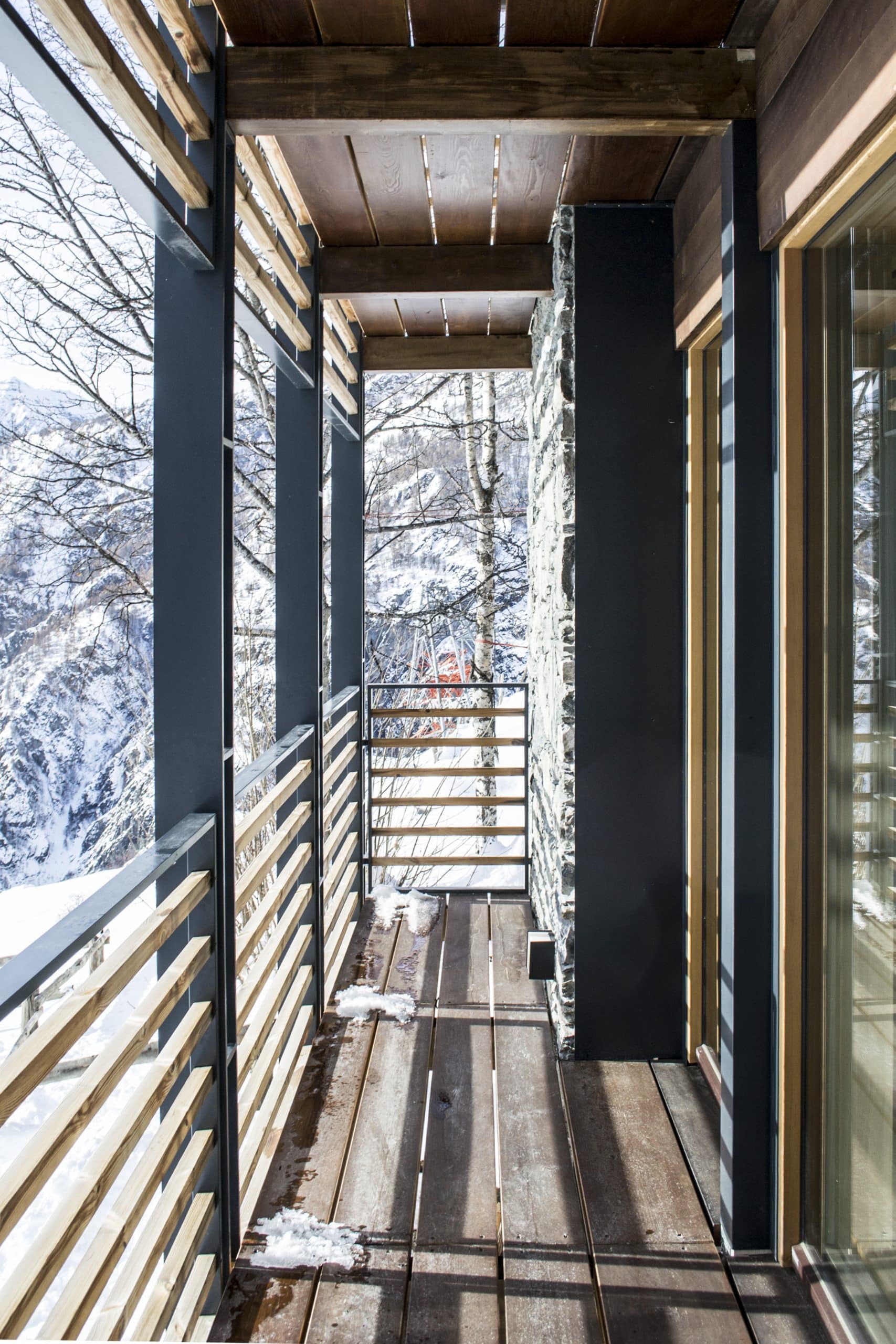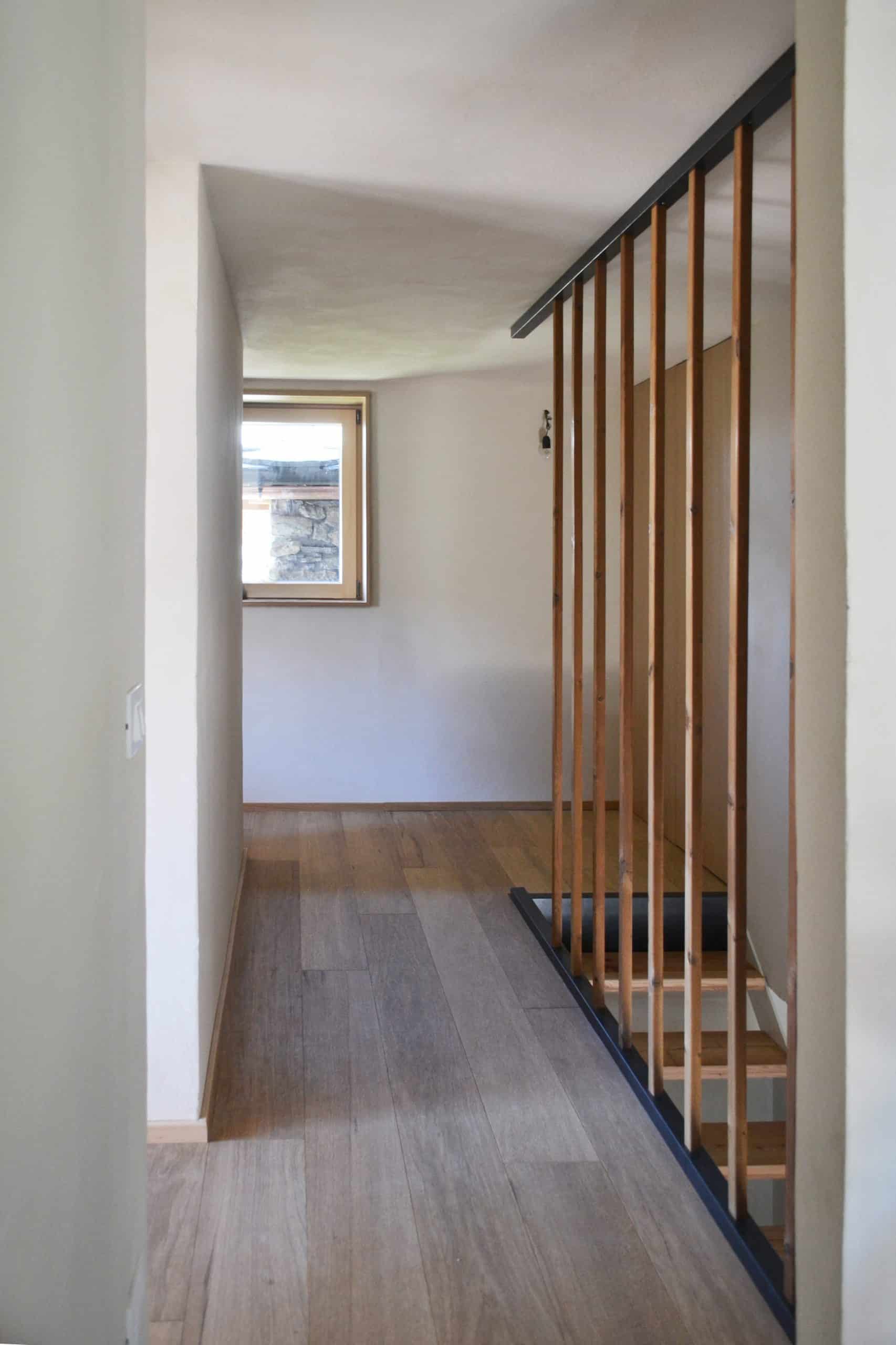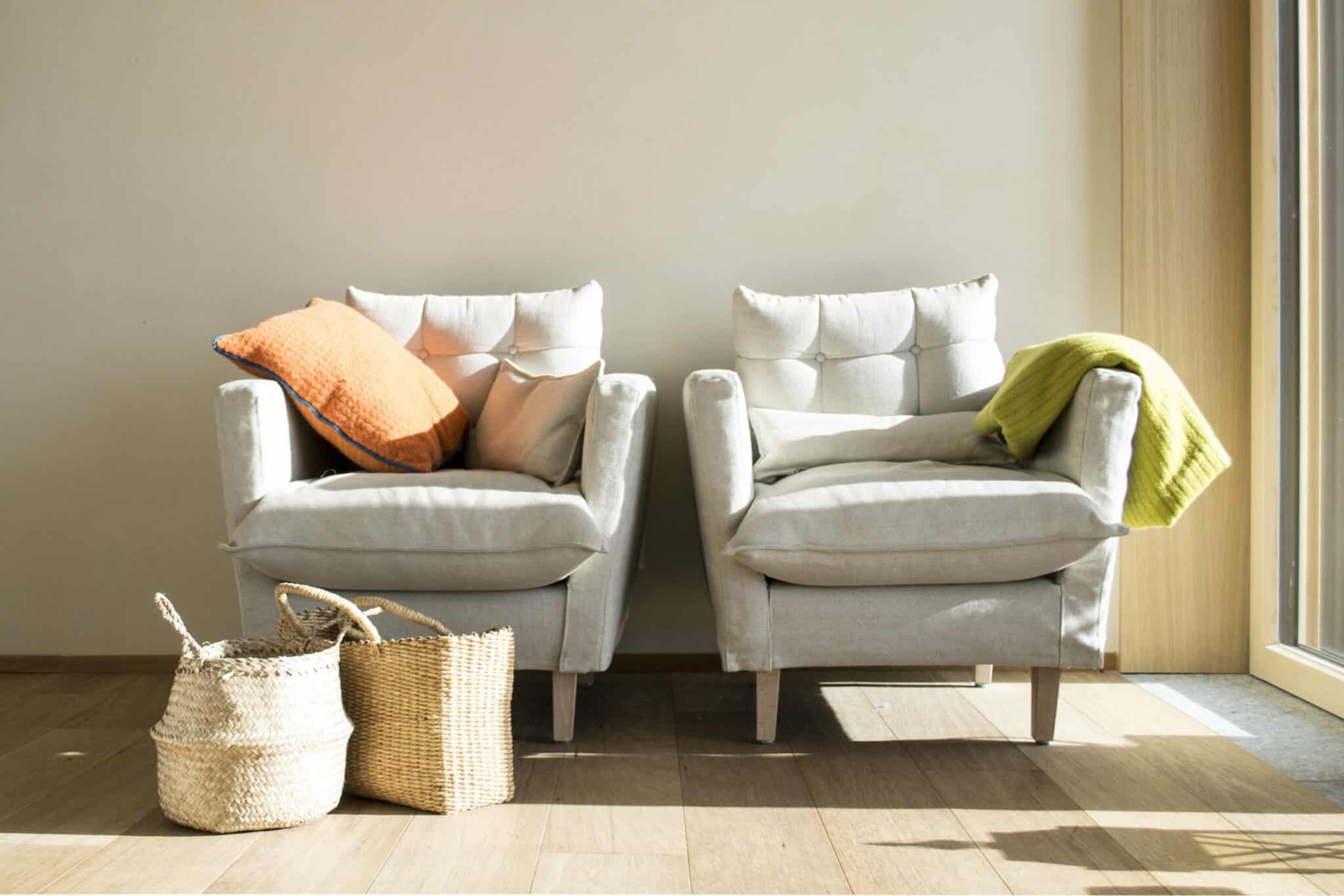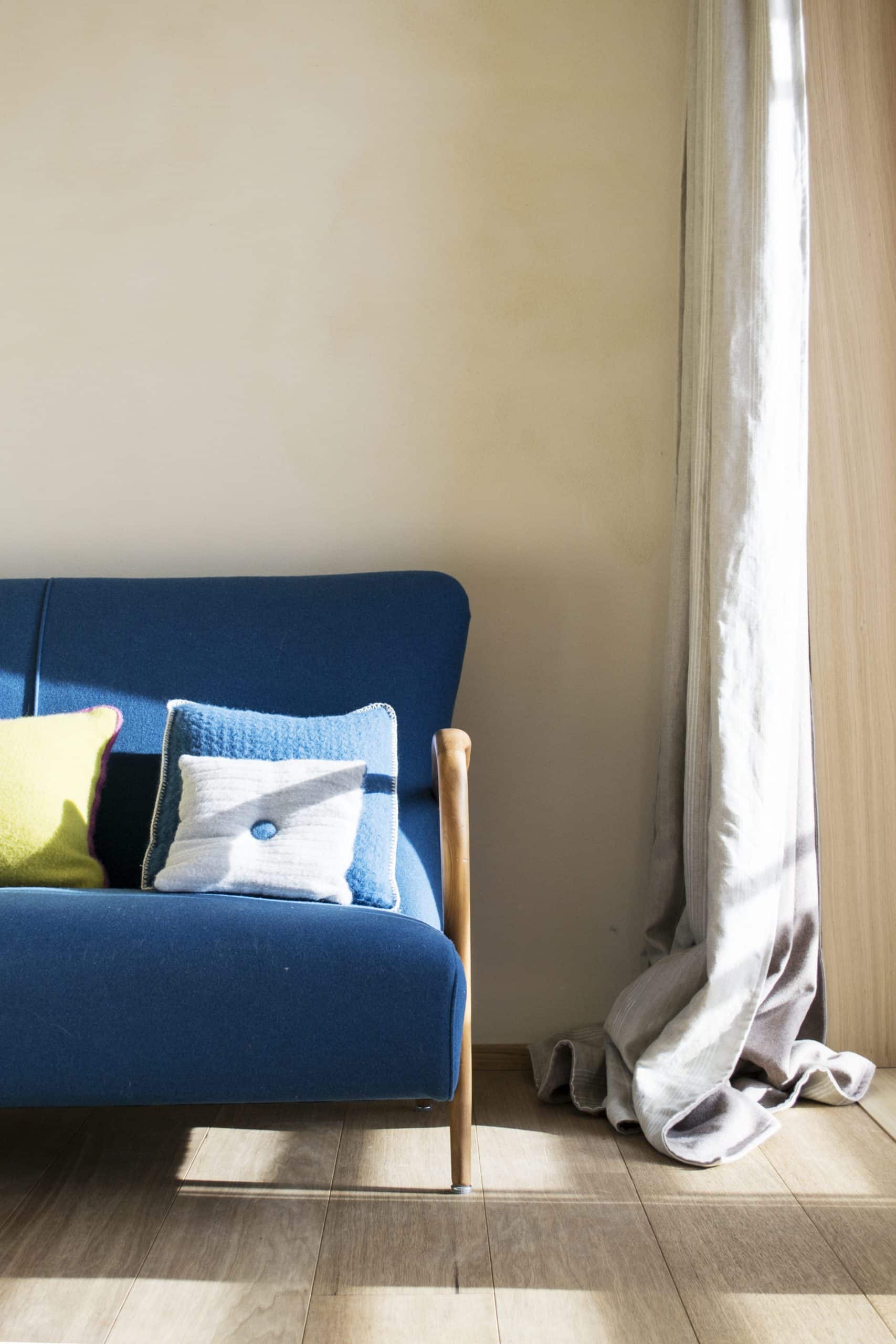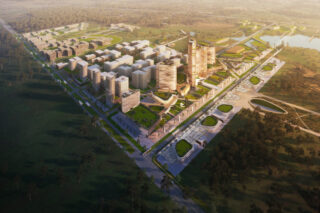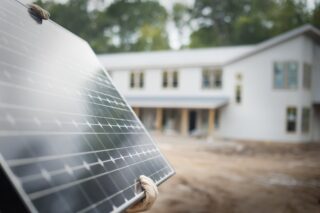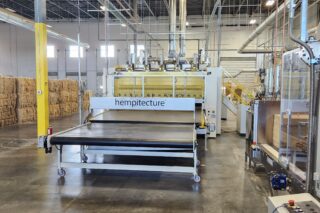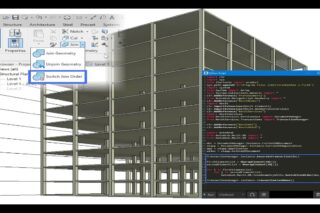Building houses using by-products from rice has not been fully explored until recently with Italian start-up, Ricehouse.
In Europe, Italy is the 1st major producer of rice and it is no wonder that Ricehouse, a start-up firm that uses rice in building houses, is based there. Founded by architect Tiziana Monterisi and Alessio Colombo the company’s main activity is to use components of rice in construction, with the dual aim to achieve a high degree of sustainability while supporting local communities and farmers in Italy. In 2020, Ricehouse has completed 20 houses and their objective this year through 2022 is to build 30 to 40 houses made of rice components in Italy and export the knowledge and technology to other rice-producing countries like Japan and Spain.
ArchiExpo e-Magazine spoke with one of the architects of Ricehouse, Katerina Dimova to know more about the organization, their products, and the houses that they have built using rice and its components.
ArchiExpo e-Magazine: Can you share with us how Ricehouse started?
Katerina Dimova: Ricehouse was founded in 2016, by 2 partners, Tiziana Monterisi and Alessio Colombo. Tiziana specialized in bio architecture with 20 years experience, and since her graduation, she developed her skills and she concentrated on natural architecture. Her previous experience was with Italian modern artist Michelangelo Pistoletto and she worked with him for 10 years and during that experience, she developed a deep knowledge of natural materials with social responsibility, using natural products that will impact social points of view. In 2016 she founded Ricehouse with Alessio Colombo who does the research and development for products.
ArchiExpo e-Magazine: What are your different products?
Dimova: We have 4 main product categories: First category includes product materials mixed with water which is used for finishings, screens, and plasters for home building. They are powder-based materials and are all mixed with water. The second category are the dry products. These include the panels with different typologies of prefabricated panels made with rice husks and straw. These products replace the gypsum boards that are normally used in building houses and can be used for different usages in the house. All of our panels are 100 percent natural and completely aligned with the circular economy approach that our company is following. The panels are all returned to nature or can be used to build other products when they are no longer used.
The third category includes insulation materials which are the rice straw and husks. We stock and control these materials and check the humidity. There is a protocol we follow when we transform these materials into construction products. They arrive in the construction site and can be used in insulation for the walls. For example for the wall panels, we can put rice straws or husks with it for insulation.
The fourth category includes mixtures based on clay and rice that is specially developed for 3D printing. We created the first 3D printed house made with this clay-based mixture called Gaia. It is a small 25 sqm house that was 3D printed in partnership with 3D printing firm Wasp. Starting with raw earth clay, we added straw, rice husk and lime to reinforce the mixture. This project was built in just over a week and it is a social community project which now serves as a showroom that is used in the main office of Wasp in Massa Lombarda. This is a pilot project and we will promote this in developing countries. The cost of 3D printers is high, and we want to start this project in Africa, but it is still expensive to send the 3D printers in Africa so we are now exploring how to reduce the costs.
Photo credits: 3D printed house. Gaia WASP Italy. Courtesy of Ricehouse.
Dimova: We are a small startup, and we do not have a production facility. We develop the recipes and own the intellectual property of the products and work with 3rd parties to produce the products. We have different producers for each product. One producer is a big Italian company that has been in the business for 30 years.
Another producer is creating panels and the lead time is a bit longer for this. We also work with companies that create wooden houses and we supply the insulation materials. We always work with local suppliers as one of our objectives is to support locals in Italy and have a short supply chain.
In 2020, we became a benefit corporation and we have declared that we want to impact the local community and environment. So we do not want to supply our products and materials to a faraway place like China and the US. We just want to export the knowledge and know-how and not the products. Like for example in Asia, we want to start local partnerships and replicate the production and supply chain there. So we have started to talk with stakeholders in Japan as they are the 9th biggest producer of rice in the world and with Spain which is the 2nd biggest producer in Europe after Italy.
ArchiExpo e-Magazine: Where do you source the rice by-products that you use in making your products?
Dimova: We source directly from local farmers in northern Italy. 90 percent of Italian rice comes from Torina, Milan and the northern part of Italy. All of our suppliers are in a range of 300 kilometers. Our business started from the fields because we saw that every year in September the rice fields were burned, now it is not legal anymore so we asked ourselves how we can solve this problem because burning rice creates enormous amounts of CO2 and how we can solve this and help the environment. In addition, it is a problem for the farmers because they need to burn them. It is a creation of a new economy, in general, rice is the most consumed food on the planet, 66 percent of the population worldwide bases its diet on rice. To consider how much waste that can be used in other opportunities and economies from one side we help from an environmental point of view as the fields are not burned anymore.
We also source from rice processing factories and take the materials directly from there. The raw rice arrives in the rice processing factory with husk covering, then they do husking where they take out the husk, and we take the husks.
Photo credits: Materials by Ricehouse. Courtesy of the brand.
ArchiExpo e-Magazine: Can you share with us your most recent projects which feature the products you developed with rice components?
Dimova: Regarding the realized projects, we have mainly residential projects. One of the most interesting ones is the Casa UD project located in Chamois.It’s basically a renovation of an existing old dry stone 200 sqm cottage that dates back to 1834. It was completely renovated using rice straw, clay, wood and cellular glass and it is now a passive house that requires no heating and cooling. It is situated in the alpine zone with 1816 m a.s.l and there is a stable temperature of 16 to 17 degrees. The load-bearing structure of the roof and perimeter walls was made of carpentry with prefabricated frames in wood and straw and assembled on-site in just 2 weeks. This house started construction in June 2016 and finished in April 2017 and 5-6 construction people worked on it.
The energy requirement of the house is low thanks to the high insulation provided by the straw infill of the frame structure and the cellular glass from which the ground is isolated. This project was awarded the 2017 Sustainability Award organized by the Agency for Energy and Sustainable Development of Modena (AESS), in the category of residential construction – renovation and restoration.
View the renovation of the Casa UD house here.
Photo credits: Casa UD project located in Chamois. Courtesy of Ricehouse.
Currently, we are also in the design phase of a very big scale project in Milan, which is an energy renovation of an 8 story building spread in 4 blocks. We will renovate the whole envelope and insulate these buildings with our materials and the project will use the whole technology that we have developed. The interesting part of this project is the 3,200 square meter rooftop, which will be transformed into a social garden where local residents can cultivate vegetables and there will be different associations that will manage and sell the produce from the rooftop garden in local markets that will help cover the expenses. We will start construction for this project in the middle of 2021 and it will continue for 1 year.
ArchiExpo e-Magazine: What are the products that you are currently developing now and will be released in the future?
Dimova: Right now, we have all products connected with the construction part of the house. What we are focusing on now is the part of the furniture. We are trying to create 100 percent natural panels for kitchen tops, closets and cabinets. We saw that there is a big interest for these panels because in the market there are a few products that are 100 percent natural and made from low toxic materials. We are focusing on research and development on the panels, both for the design and the architecture.
3D printing technology also fascinates us and we are developing materials that can be 3D printed, to create design objects like stools, chairs, and vases. And we will always be 100 percent natural. It is important for us to remain pure, and we are sure that this is the right path, considering global warming and how life is changing. We need to be radical and we need to prioritize nature as much as possible.


